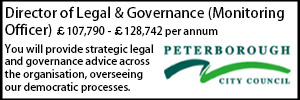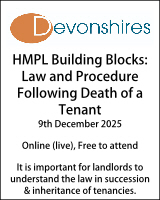Police watchdog warns against cuts to work done to tackle anti-social behaviour
It would be “a very significant mistake” if police chiefs and Community Safety Partnerships were to reduce the amount of work they do in relation to anti-social behaviour and to concentrate instead on volume crime work, a report by Her Majesty’s Inspectorate of Constabulary has warned.
“Managing ASB is crucial to sustaining the vitality and confidence of communities,” it added. “Untreated ASB acts as a magnet for other crime and disorder problems and areas can quite easily tip into a spiral of economic and social decline.”
The HMIC report also found that:
- ASB is widespread and “there is inadequate understanding of the serious impact on the quality of people’s lives and the way it changes everyday behaviour”
- There are significant areas of need involving very vulnerable people
- The public draw no meaningful distinction between crime and ASB. “The public find it immaterial that the most insidious individual incidents of ‘pestering’, ‘taunting’ or ‘targeting’ individuals – including the most vulnerable – may not qualify technically as ‘crimes’ with the prospect of prosecution”
- Over time ASB has become a second order consideration “as has keeping the peace”. “The issues and resolutions arising from the policing of ASB have not counted or been counted in the same way as those relating to crimes”
- There is a notable variability in satisfaction with the service given to victims across the country
- Some Community Safety Partnerships are “much less effective than accepted wisdom would have it”. Among the criticisms were variable standards, a focus on working together but not for the public, a focus on strategy rather than delivery, and interventions taking significant amounts of time to be delivered. “The investment in partnership endeavours should be questioned in terms of outcomes for the public” and the balance between early action and resolution and longer term investments needs revisiting
- The current oversight of partnership performance by local authorities “provides a degree of scrutiny but does not necessarily guarantee transparent and accessible information for the public on how well the CSP is delivering timely, appropriate and cost effective interventions to reduce ASB”
- Some improvements have been made in recent years through the development of legislative powers and programmes, and the Respect programme in particular
- Most people rely heavily on the police to deal with ASB “despite the responsibilities of other agencies”. Some 90% of respondents to a survey cited the police as responsible. Local authorities were “a distant second” at 36%
- Out of 43 forces, only 22 have IT systems that help them identify and prioritise repeat calls, at the time of the report being made, and just 16 forces can effectively identify vulnerability. “This falls to only 13 forces that can effectively identify those most at risk, repeat vulnerable callers, at the time the call is made”
- There has been an increasing acceptance or “defining down” of ASB “that we should not have grown used to”
- Reports of ASB should count and be counted. “The public are entitled to accessible, clear and easy to find information on the level and nature of ASB in their communties”
HMIC suggested that three elements were critical to providing an effective service for victims: briefings on ASB for all staff likely to deal with the issue; tracking what is happening locally using data and intelligence; and the problem-solving capacity of neighbourhood policing teams.
The report added that victims were adversely affected by graded response systems that prioritise calls for attendance, and by lengthy partnership processes.
HMIC identified two potential ways forward. The first is to draw on evidence of the intensity of the impact ASB has on different groups of people and areas, and combine it with a “what works best” approach in police systems. While this damage limitation approach should deliver “better treatment” of the issues, the report said, it is unlikely to stem the growth of the problem.
The second option is for an early intervention strategy, similar to those used in the health and education sectors and which has a “huge potential pay-off”. HMIC said: “It will require reform of police availability and a refocusing on what causes harm in communities, rather than what is or is not a 'crime', or what can be managed out of police systems.” The report acknowledged that such an approach would require “feet on the street”.
This strategy would also require better pace and focus of partnership efforts to deal with the likes of wayward tenants, and shops selling alcohol, knives and spray paint. HMIC added that individuals and communities needed to mobilise their defences by re-establishing acceptable rules of behaviour for those in public spaces or impacting their neighbours.
Sir Denis O’Connor, HM Chief Inspector of Constabulary, said: “We all want civility restored to society and the public rely heavily on the police to help this happen. But the police cannot do this on their own. The public won’t tackle anti-social behaviour on the streets while they fear reprisals. Perpetrators need to know they are wrecking lives, the results can be tragic and that they will get swift action from the authorities if the public call for help.”
The Inspectorate's work showed that when the police take swift action, the public are very satisfied, he said.
But Sir Denis added: “Officers are not always equipped with the information they need, and a limited review of partnerships raises concern about the speed with which they achieve results for victims. I am calling on the police, at the very least, to publish their data and enable the public to see the progress they are making.
“HMIC’s work provides the evidence needed for a more ambitious ASB strategy to turn the tide on this problem, based around greater police availability, action-orientated partnerships and community involvement.”
The Home Secretary, Theresa May, claimed that the HMIC report showed that “for too long this problem has been sidelined and victims, especially those who are vulnerable, have been let down.
"The public are rightly concerned about levels of anti-social behaviour and police and other local agencies must work together to tackle it. Even in a tough financial climate, tackling antisocial behaviour must be core business.
The Home Secretary insisted that the government would ensure the right tools and powers are available “to crack down fast on perpetrators”. The government’s plans to make police more accountable through elected police and crime commissioners will put communities at the heart of the solution, she claimed.
In July, May said it was "time to move beyond the ASBO" and announced plans to introduce a "simple, clear and effective sanctions regime".
- Details
It would be “a very significant mistake” if police chiefs and Community Safety Partnerships were to reduce the amount of work they do in relation to anti-social behaviour and to concentrate instead on volume crime work, a report by Her Majesty’s Inspectorate of Constabulary has warned.
“Managing ASB is crucial to sustaining the vitality and confidence of communities,” it added. “Untreated ASB acts as a magnet for other crime and disorder problems and areas can quite easily tip into a spiral of economic and social decline.”
The HMIC report also found that:
- ASB is widespread and “there is inadequate understanding of the serious impact on the quality of people’s lives and the way it changes everyday behaviour”
- There are significant areas of need involving very vulnerable people
- The public draw no meaningful distinction between crime and ASB. “The public find it immaterial that the most insidious individual incidents of ‘pestering’, ‘taunting’ or ‘targeting’ individuals – including the most vulnerable – may not qualify technically as ‘crimes’ with the prospect of prosecution”
- Over time ASB has become a second order consideration “as has keeping the peace”. “The issues and resolutions arising from the policing of ASB have not counted or been counted in the same way as those relating to crimes”
- There is a notable variability in satisfaction with the service given to victims across the country
- Some Community Safety Partnerships are “much less effective than accepted wisdom would have it”. Among the criticisms were variable standards, a focus on working together but not for the public, a focus on strategy rather than delivery, and interventions taking significant amounts of time to be delivered. “The investment in partnership endeavours should be questioned in terms of outcomes for the public” and the balance between early action and resolution and longer term investments needs revisiting
- The current oversight of partnership performance by local authorities “provides a degree of scrutiny but does not necessarily guarantee transparent and accessible information for the public on how well the CSP is delivering timely, appropriate and cost effective interventions to reduce ASB”
- Some improvements have been made in recent years through the development of legislative powers and programmes, and the Respect programme in particular
- Most people rely heavily on the police to deal with ASB “despite the responsibilities of other agencies”. Some 90% of respondents to a survey cited the police as responsible. Local authorities were “a distant second” at 36%
- Out of 43 forces, only 22 have IT systems that help them identify and prioritise repeat calls, at the time of the report being made, and just 16 forces can effectively identify vulnerability. “This falls to only 13 forces that can effectively identify those most at risk, repeat vulnerable callers, at the time the call is made”
- There has been an increasing acceptance or “defining down” of ASB “that we should not have grown used to”
- Reports of ASB should count and be counted. “The public are entitled to accessible, clear and easy to find information on the level and nature of ASB in their communties”
HMIC suggested that three elements were critical to providing an effective service for victims: briefings on ASB for all staff likely to deal with the issue; tracking what is happening locally using data and intelligence; and the problem-solving capacity of neighbourhood policing teams.
The report added that victims were adversely affected by graded response systems that prioritise calls for attendance, and by lengthy partnership processes.
HMIC identified two potential ways forward. The first is to draw on evidence of the intensity of the impact ASB has on different groups of people and areas, and combine it with a “what works best” approach in police systems. While this damage limitation approach should deliver “better treatment” of the issues, the report said, it is unlikely to stem the growth of the problem.
The second option is for an early intervention strategy, similar to those used in the health and education sectors and which has a “huge potential pay-off”. HMIC said: “It will require reform of police availability and a refocusing on what causes harm in communities, rather than what is or is not a 'crime', or what can be managed out of police systems.” The report acknowledged that such an approach would require “feet on the street”.
This strategy would also require better pace and focus of partnership efforts to deal with the likes of wayward tenants, and shops selling alcohol, knives and spray paint. HMIC added that individuals and communities needed to mobilise their defences by re-establishing acceptable rules of behaviour for those in public spaces or impacting their neighbours.
Sir Denis O’Connor, HM Chief Inspector of Constabulary, said: “We all want civility restored to society and the public rely heavily on the police to help this happen. But the police cannot do this on their own. The public won’t tackle anti-social behaviour on the streets while they fear reprisals. Perpetrators need to know they are wrecking lives, the results can be tragic and that they will get swift action from the authorities if the public call for help.”
The Inspectorate's work showed that when the police take swift action, the public are very satisfied, he said.
But Sir Denis added: “Officers are not always equipped with the information they need, and a limited review of partnerships raises concern about the speed with which they achieve results for victims. I am calling on the police, at the very least, to publish their data and enable the public to see the progress they are making.
“HMIC’s work provides the evidence needed for a more ambitious ASB strategy to turn the tide on this problem, based around greater police availability, action-orientated partnerships and community involvement.”
The Home Secretary, Theresa May, claimed that the HMIC report showed that “for too long this problem has been sidelined and victims, especially those who are vulnerable, have been let down.
"The public are rightly concerned about levels of anti-social behaviour and police and other local agencies must work together to tackle it. Even in a tough financial climate, tackling antisocial behaviour must be core business.
The Home Secretary insisted that the government would ensure the right tools and powers are available “to crack down fast on perpetrators”. The government’s plans to make police more accountable through elected police and crime commissioners will put communities at the heart of the solution, she claimed.
In July, May said it was "time to move beyond the ASBO" and announced plans to introduce a "simple, clear and effective sanctions regime".
22-10-2025 4:00 pm
05-11-2025 4:00 pm



















